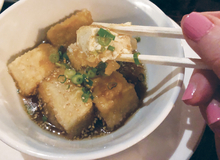A growing portion of Minnesota’s soybeans are destined for global kitchens
When farmer Keith Schrader plants his soybean fields near Nerstrand in southeast Minnesota this spring, he’ll be planting about 700 acres with a type that’s in high demand across the globe: food-grade soybeans. Food-grade soybeans are used for tofu, tempeh, edamame, soy sauce, soy drinks and frozen confections — or just to put beans on the table.
Most soybeans grown in Minnesota, called conventional soybeans, are often used for livestock feed. The oil has a wide variety of uses, including biodiesel.
Seven to 8% of Minnesota’s soybean fields are planted with food-grade soybeans. Farmers like Schrader plant them for “higher profitability for the farm.” The premiums he is paid are higher than what he gets for his conventional soybeans, although yields are often lower. Schrader first tried food-grade soybeans on his farm about 20 years ago and has planted them regularly for the last 10 years. He expects demand to be “off the charts” in the coming years, especially as more plant-based meat and dairy alternatives come to market.
“Agronomically, there is little difference between the two types of soybeans except that food-grade soybeans are not bred to resist herbicides; they are not genetically modified,” says Seth Naeve, University of Minnesota Extension soybean specialist. “So Extension resources are valuable to many of these farmers who depend on more traditional weed control methods.” Food-grade soybeans also present opportunities for soybean breeders like University of Minnesota’s Aaron Lorenz to conduct research on unique traits that exporting companies look for.
Not without challenges
“Good weed management is crucial for food-grade soybean growers,” says Jared Goplen, Extension crops educator. “It’s very important for growers to know their weeds since there are fewer weed control options for non-GMO crops.” Goplen also emphasizes to growers the need to manage the weed seedbank, the seeds that fall from weed plants into the soil and sprout later, to keep problems at manageable levels.
Schrader must also follow specific requirements to keep these soybeans separate from conventional soybeans to preserve their unique traits (a practice called identity preservation), including cleaning any machinery that might be used for both.
It takes a network
Food-grade soybean farmers contract with processing companies that have customers in the U.S. and abroad. Most of the demand for food-grade soybeans comes from Japan and other Asian nations, but soy-based foods have grown in popularity worldwide.
“These companies have a direct connection with food companies overseas who are demanding the high-quality food-grade soybeans that Minnesota farmers are providing,” says Eric Wenberg, executive director of Specialty Soya and Grains Alliance in Mankato, which represents companies working with farmers on identity-preserved field crops.
Buyers are looking for traits that include higher protein levels in soybeans, higher sugar content and soybeans with a specific taste. “Public science at land-grant universities is vital to the industry to help meet these demands,” says Wenberg.



